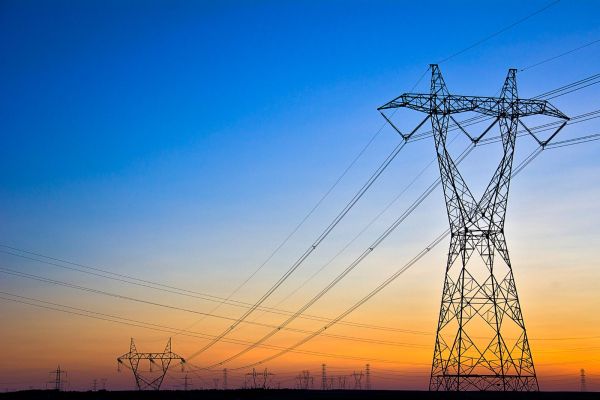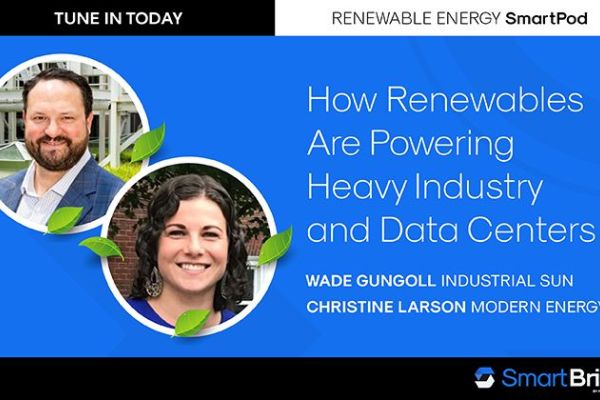How Solar and Wind Stack Up Against 4CP Demand Charges
Insights
Jan 31, 2023
Written by Alexandra Williams
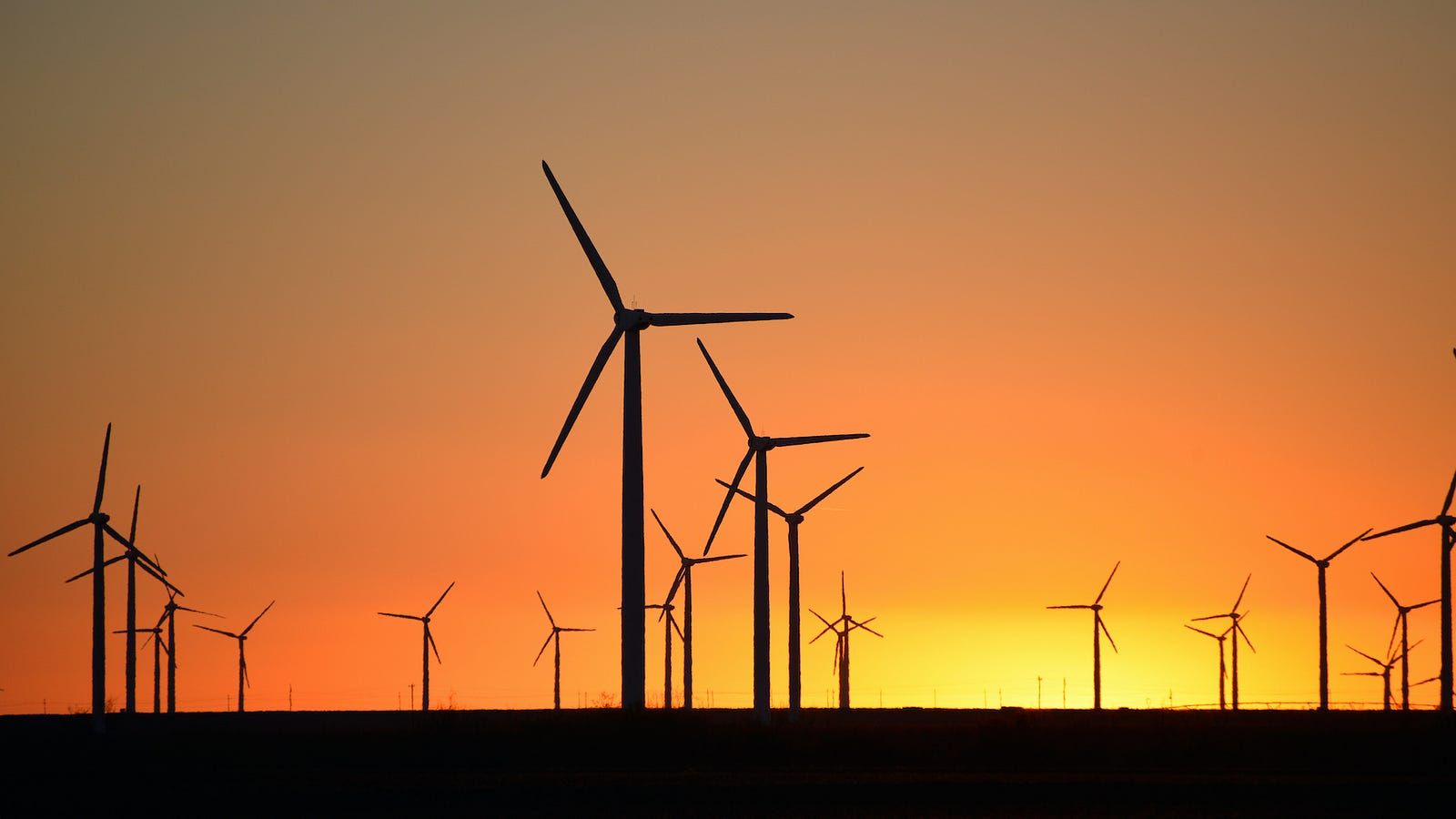
As we wrote about earlier this month, 4CP demand charges in ERCOT can comprise a substantial portion of industrial power bills. In response, industrials are increasingly exploring a menu of options for mitigating those charges, including what we call net-metered industrial solar.
In practice, a variety of large-scale generation types could be used for industrial net metering, ranging from natural gas to wind to solar. Texas currently holds the crown for the greatest wind energy generation of any U.S. state — and most countries, too! When compared globally, the state would rank 5th among countries on installed capacity.
However, Texas is also a plentiful source of both sunshine and land on which to host solar panels. In fact, the state is nipping at the heels of California in terms of utility-scale solar capacity.
This naturally begs the question: In a state known for its wind power prowess, how do solar and wind stack up against one another in tackling the 4CP demand charges that can be such a pain point for industrial facilities?
Solar vs. Wind: Which Generates During the 4CP Moments That Matter?
With ERCOT’s 4CP program, four 15-minute windows during the summer months determine a year’s worth of assessed demand charges for industrial facilities. Based on Industrial Sun analysis, looking back across 15 years of data, an overwhelming 97% of 4CP time windows have roughly fallen within an hour-and-a-half block ranging from 3:30 p.m. to 5:00 p.m.
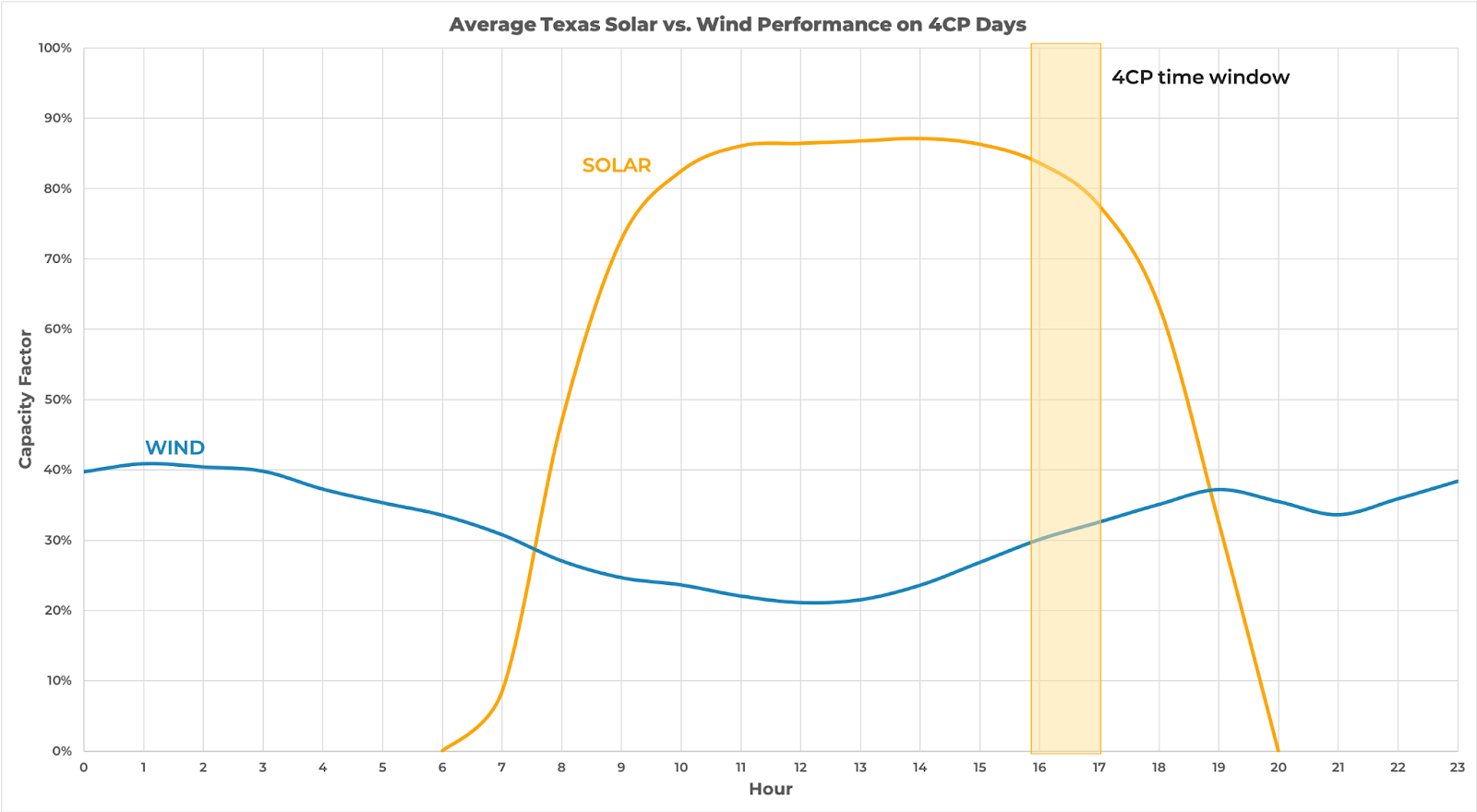
Solar is well-matched to the 4CP window, which equals the timeframe of ~97% of 4CP intervals over the past 15 years. (image source: Industrial Sun)
More happy coincidence than magic trick, solar’s generation profiles overlap with this very same window, which accounts for its unrivaled effectiveness in slashing 4CP charges. In fact, solar PV’s daytime generation curve so nicely aligns with the 4CP time window that it touts a 75% to 90% capacity factor during these typical demand spikes.
Compare and contrast these stats with those for ERCOT wind generation, which typically bottoms out around midday and peaks in the evening and overnight hours that fall well outside the 4CP window. While it begins to ramp up in the late afternoon, wind doesn’t reach peak generation until the evening and overnight hours, resulting in a less than 20% to 40% capacity factor during the likely 4CP moments.
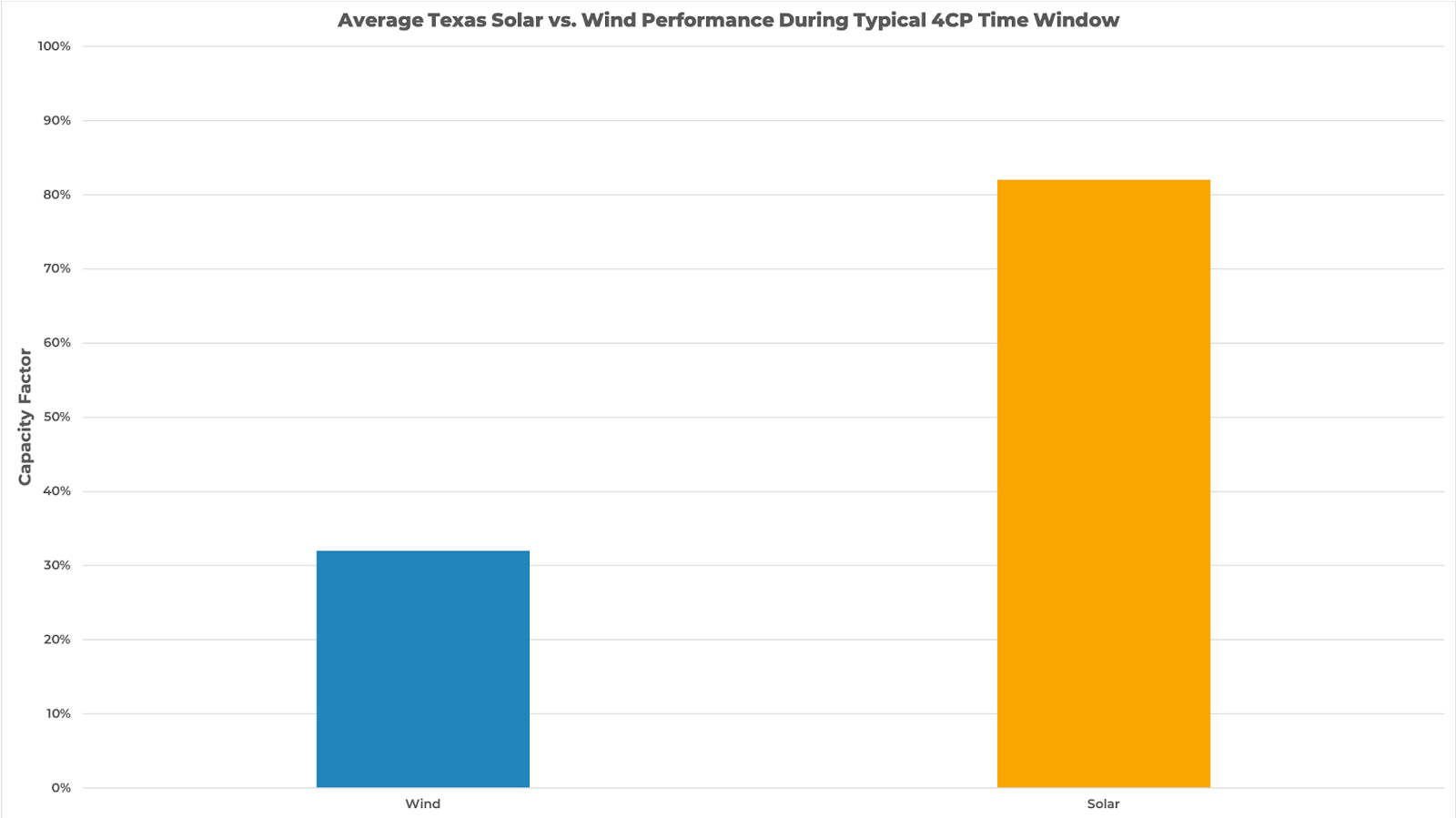
Solar shows superior value over wind during the typical 4CP time window. (image source: Industrial Sun)
Put simply: typical ERCOT wind generation is mismatched to the 4CP window, while solar fits like a glove.
How Solar vs. Wind 4CP Capacity Factors Impact Industrial Power Bills
That difference in capacity factor relative to 4CP moments — 20–40% for wind vs. 75–90% for solar — translates into big impacts on industrials’ power bills. By substantially shrinking the 4CP demand charge component of the all-in power costs, net-metered industrial solar is able to achieve 2x or more the energy cost savings as wind.
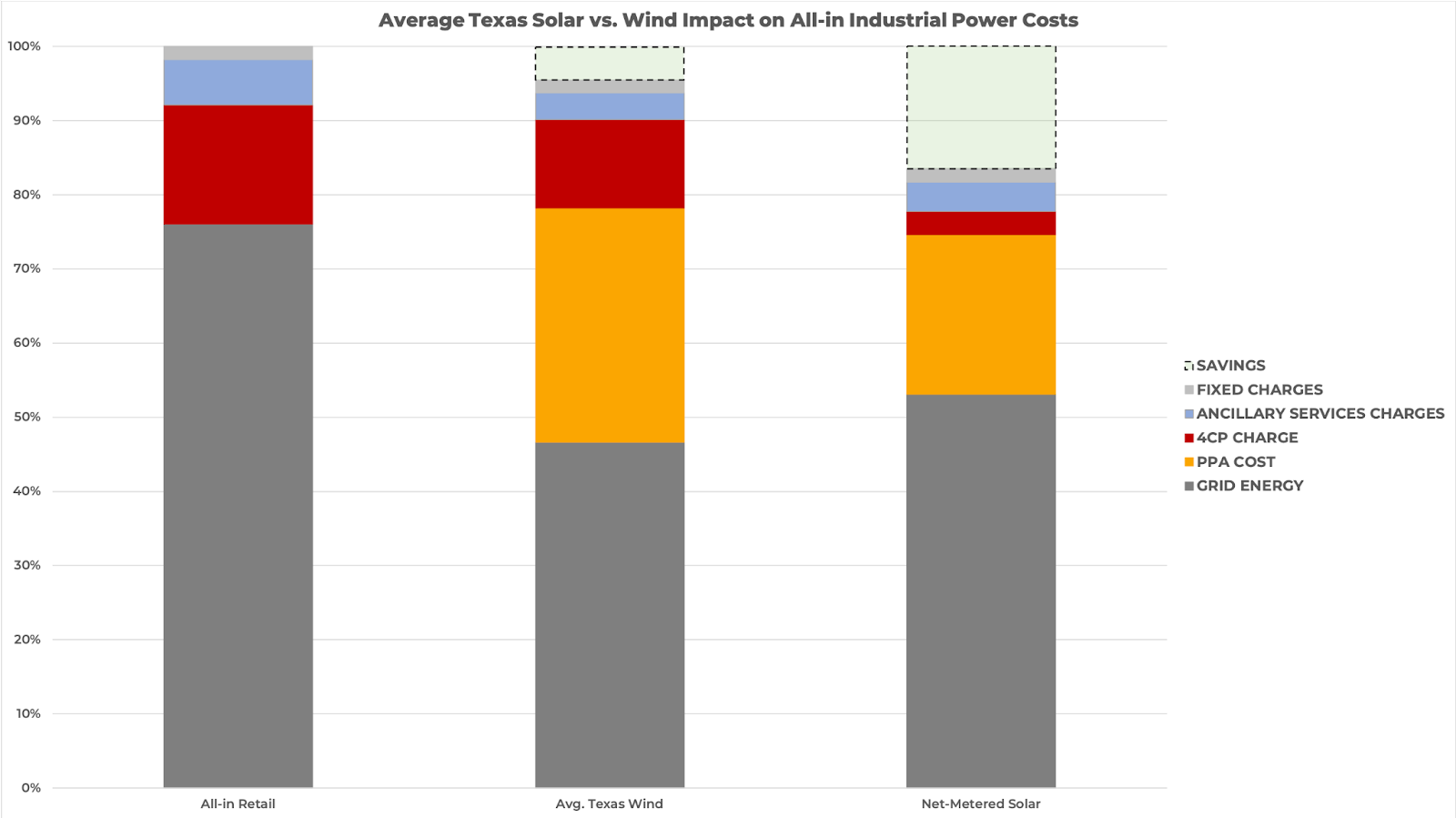
Net-metered solar, with annual net savings of approximately 15–30%, offers significant savings over wind in all-in industrial power costs. (image source: Industrial Sun)
Without a doubt, solar and wind will both continue to play a bedrock role in Texas’ ongoing energy transition — and for corporate offtakers interested in signing VPPA’s for large-scale, off-site renewable generation, wind and solar alike both remain attractive options in the Lone Star State.
But for industrial facilities looking to corral their all-in power costs — and perhaps decarbonize their Scope 2 and even Scope 3 emissions via renewable energy procurement — net-metered industrial solar is hard to beat, even when matched up against justifiably world-famous Texas wind.
Learn more about net-metered industrial solar and how it can help tackle your power bill pain points.


